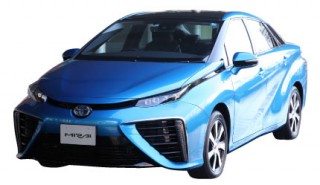Loading
Search
▼ Toyota's Strategy Behind Bargain-price FCVs
- Category:Other

NIKKEI
Toyota Motor will release its Mirai fuel cell vehicle in Japan on December 15. The price is over 7.2 million yen including taxes, but the actual cost to consumers is around 5.2 million yen after government subsidies. What is Toyota's strategy in placing its FCV in a similar price range to its Crown luxury sedan?
A few years ago, development of fuel cell vehicles (FCVs) was still considered a big gamble for Toyota. Yoshikazu Tanaka remembers his then-supervisor telling him, "If sales are weak, you and I will each have to buy one."
Tanaka says such early discussions about sales plans for the Mirai, which is the world's first mass-produced FCV, were half serious and half in jest. These next-generation eco-cars, which run on hydrogen, were expected to cost as much as 100 million yen each—if they ever made it to market. At that time, many inside and outside the company questioned whether the vehicles would really be sold.
The sticker price of the Mirai, which goes on sale December 15, was set at 7,236,000 yen. After government subsidies, consumers will actually pay around 5.2 million yen, which is not much different from the price of a Crown luxury sedan. While that price is still high compared with mass market cars, the drop from 100 million yen to 5.2 million yen is dramatic. How was it achieved?
Tanaka says one reason is that the costs of the fuel cell system were reduced to one-twentieth the prior level. One element is the carbon fiber developed with Toray Industries. Tanaka says the light-weight carbon fiber ribbon that surrounds the hydrogen tank "is as strong as the one used in the prototype, but we were able to get our supplier to lower the price." The cost reduction achieved is thought to be substantial.
The cost reductions from mass production are also large, and the Mirai is designed to eliminate extraneous costs. Aside from the fuel cell system, the developers intentionally limited the use of CFRP (carbon fiber reinforced plastic) and other cutting-edge technologies. The interior is simple, without the walnut or other wood grain trim that gives the impression of a luxury car.
These development decisions for the Mirai are intentionally different from those of competitors such as Tesla and BMW, whose offerings have been a hot topic in the news lately. Behind Toyota's strategy is the company's ambition to take fuel cell vehicles mainstream.
- December 3, 2014
- Comment (0)
- Trackback(0)

